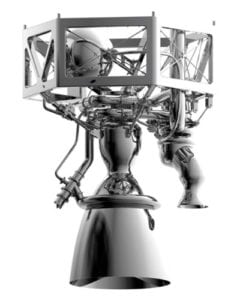Latest News

The Prometheus engine. Photo: ESA.
The European Space Agency (ESA) and ArianeGroup, the 50/50 joint venture between Airbus and Safran, have signed a 75 million euro ($88.3 million) contract for the design, manufacturing and testing of the first two examples of the Prometheus demonstrator engine. The French Space Agency (CNES) is leading in the early design process, and testing is scheduled on the P5 test bed of the German Aerospace Center (DLR) in Lampoldshausen, Germany for 2020.
Prometheus is a European demonstrator for a very low cost reusable engine, running on Liquid Oxygen (LOx) and methane. It is the precursor for future European launcher engines as of 2030.
The aim is to be able to build future liquid propellant engines with a unit cost of about 1 million euros ($1.17 million), or 10 times less than the cost of producing existing engines such as the Vulcain 2. According to ESA, the success of this type of technological challenge demands an entirely new approach and the use of innovative design and production methods and tools. Apart from switching from the traditional Ariane propellant (transition from the liquid oxygen and liquid hydrogen combination to a combination of liquid oxygen and methane), the demonstrator will entail major developments, including digitalization of engine control and diagnostics, and manufacturing using 3D printing in a connected factory environment.
Following the initial phase, which was completed in early December, the first program review confirmed the consistency of the design choices with engine specifications and in particular with the recurring cost targets. At the same time, CNES has kicked off subsystems testing with the gas generator campaign — one of the parts built using 3D printing — on the DLR’s P8 test bed in Lampoldshausen.
Get the latest Via Satellite news!
Subscribe Now